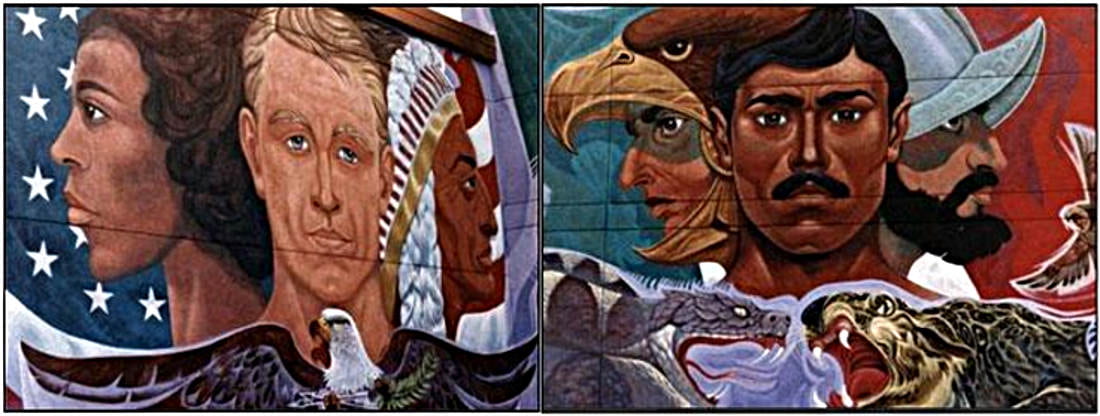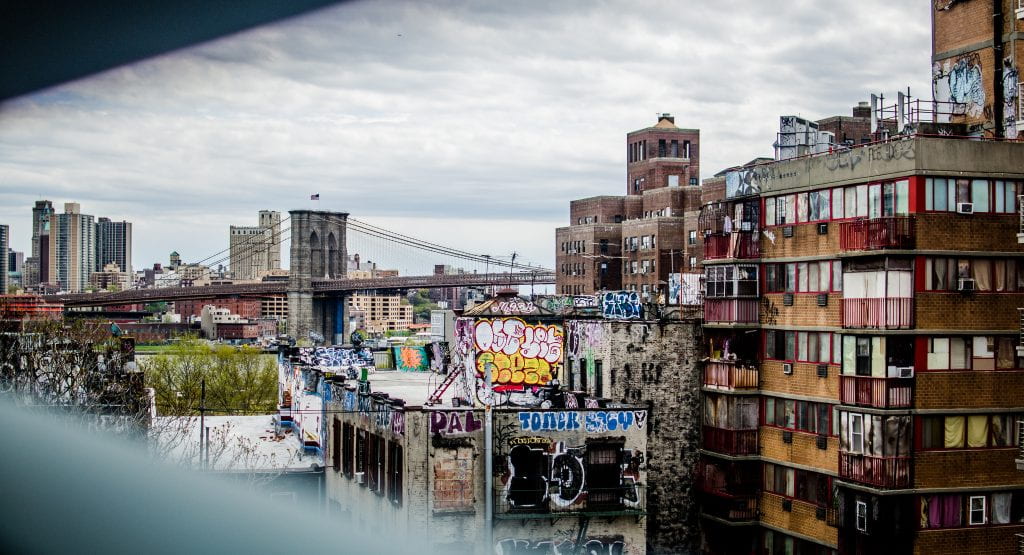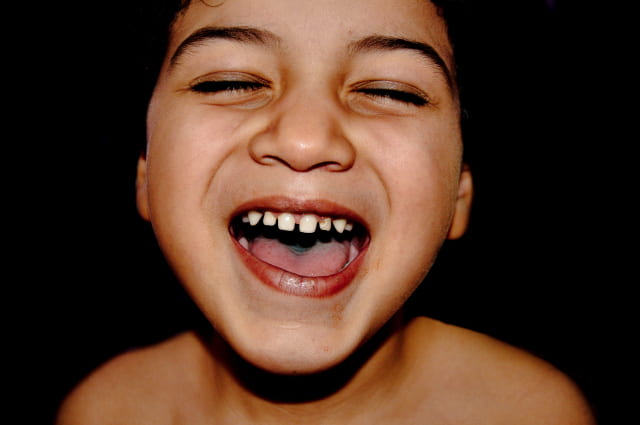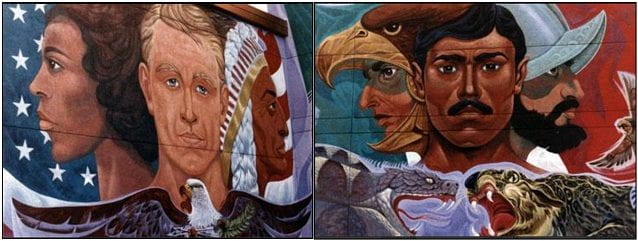
Every four years, the US Department of the Interior releases a strategic plan highlighting their mission and future goals to best serve the American people. As the current plan spanning the 2014-2018 cycle is now drawing to a close, the updated 2018-2022 strategic plan has been created, but was leaked early online. Outside Magazine drilled deep into its content, and on November 2nd published an article addressing the fact that while there were significant changes in terms of National Park fees and regulations, “few took notice that the new administration has deleted the entire diversity, equity, and inclusion mandate from its plan.”
Political discussions about the outdoors usually focuses on the health of the environment or land usage rights, but a movement has been growing to confront what has been described as “The Adventure Gap“, or the underrepresentation of people of color in outdoor spaces. Grassroots efforts have been established to try and address this, such as the organization GirlTrek to get black women outside and walking to increase the health of their communities, but with many state and national parks being located outside of a city’s public transportation network and the entrance prices for popular parks being on the rise, the government for the last several years has been developing ways to extend access to those who would not have had the opportunity to participate in the park system through programs like Every Kid in A Park, an initiative that offers free admission to all fourth grade students across the country. Yet by excluding the mandate on diversity, “the inclusion of individuals representing more than one national origin, color, religion, socioeconomic stratum, sexual orientation”, equity, “freedom from bias or favoritism”, and inclusion, “the action or state of including or of being included within a group or structure”, it is unlikely that initiatives to promote participation by minority groups within America’s public lands will be supported.
This is the latest in a string of decisions in which previous protections, mandates, and initiatives concerning diversity have been deconstructed or removed under the current administration. For example, in January following the inauguration of President Trump the new whitehouse.gov website was found to not only have dropped the page on climate change but to have also discarded the Obama-era page affirming the executive branch’s commitment to supporting the LGBTQ community. This was followed in October by an announcement from the Justice Department that protections from discrimination in the workplace under Title VII (“prohibits employment discrimination based on race, color, religion, sex and national origin”) would no longer apply to transgender workers. An easy argument to latch onto is that it is not the government’s place to be forced to affirm the identify of various groups, but after the January ban on refugees, the July ban on transgender military service personnel, and the September announcement of the repeal of the Deferred Action for Childhood Arrivals program, it is no longer assumed that the government will issue protections for those who have been historically marginalized. However, the United States has wrestled with similar moral and legal debates over the last 200 years, and as preached by 19th century minister Theodore Parker and echoed later by Dr. Martin Luther King Jr.,
“The arc of the moral universe is long, but it bends toward justice.”
Since the establishment of the United States, there has a been constant tension concerning who is allowed to claim certain rights. In 1868, a first step of progress was made by introducing the 14th Amendment into the constitution, granting US citizenship to former slaves and declaring that all people are to be seen as equal under the law. At the time this amendment was a revolutionary statement, and throughout the country’s history this amendment has been the foundation for many of the most well-known civil rights cases the United States’ court system has ever seen.
Ninety years after the 14th Amendment had been ratified, challenges on the nature of equality were still being debated and put to the test as measures such as Jim Crow laws were enacted. Separation between blacks and whites was enforced in many public spaces, and education, marriage, and healthcare for the black community were all impacted negatively as a result. Yet in 1954, these policies were brought to court under the title of Brown vs Board of Education. Through the success of the plaintiff’s argument, schools across the country would soon be desegregated over the following years.
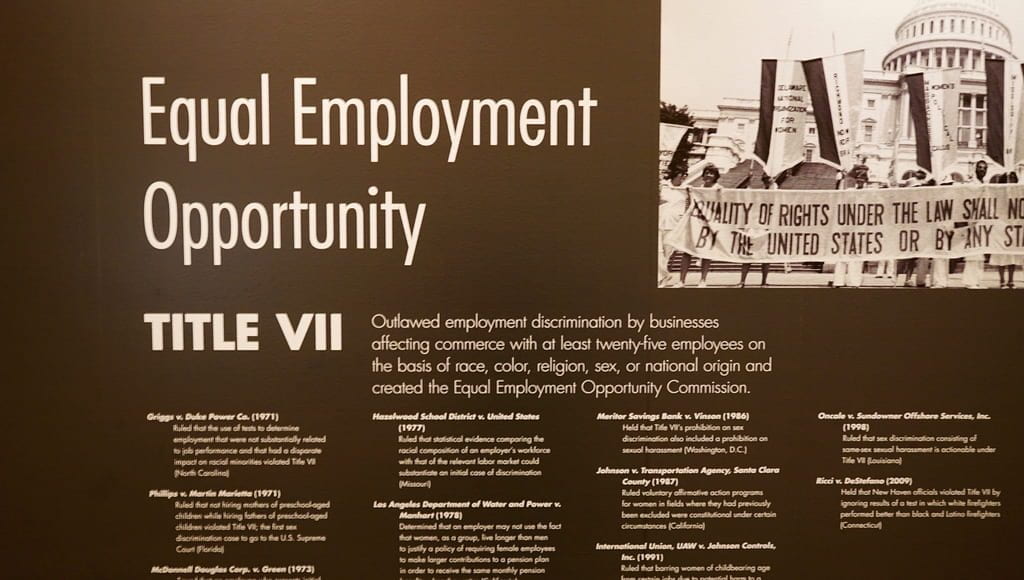
Moving into the Civil Rights period of the 1960’s, the next phase of striving towards diversity, equity, and inclusion was the implementation of Affirmative Action in 1961. The history of the action is summarized on the National Conference of State Legislators website, recounting that
“In 1961, President Kennedy was the first to use the term ‘affirmative action’ in an Executive Order that directed government contractors to take ‘affirmative action to ensure that applicants are employed, and that employees are treated during employment, without regard to their race, creed, color, or national origin.’ The Executive Order also established the President’s Committee on Equal Employment Opportunity, now known as the Equal Employment Opportunity Commission (EEOC).”
Affirmative Action still stands today and has been joined by the Age Discrimination in Employment Act of 1967 and the Americans with Disabilities Act of 1990, but much like the decisions preceding them, these acts are still hotly contested. Critics argue that the actions lower standards and may force an employer to hire candidates unfit for the job, while supporters counter that the actions succeed at allowing underrepresented applicants such as ethnic minorities, women, those over age 40, racial minorities, and those who are disabled an equal chance to compete for white collar positions instead of being weeded out at the beginning of the process due to negative biases. Regardless of the controversy, Affirmative Action was another step in laying the groundwork for future actions, codes such Title IX (“prohibits discrimination on the basis of sex in any federally funded education program or activity.”), and eventually the incorporation of diversity policies and statements into modern organizations.
After the implementation of Affirmative Action and Title IX, some organizations decided to go beyond the minimum and make diversity a core aspect of their operations. Through diversity statements, organizations and businesses make it clear that they stand for the promotion of a diverse workforce and that diversity in background, skills, and life experience breeds a healthy work environment. Universities have taken the lead on this front, and UAB has incorporated these ideals in two ways. First, any group who wants to become an official club on campus must make sure to include the UAB Nondiscrimination Clause within their constitution before being approved. Secondly, the university has created the Office of Diversity, Equity, and Inclusion to specifically promote this cause. On the office’s website, a Statement on Diversity is included that reads
“Diversity is a defining feature of Birmingham’s past, present and future. At UAB, we are committed to capitalize on what makes Birmingham and the University trailblazers in moving inclusion forward. We are invigorating conversations, fostering civic engagement, widening perspectives, stimulating innovation and connecting people. Every day, we seek ways to actively promote and recognize principles of fairness and equity, in relation to, and across, intersections of race, age, color, disability, faith, religion, ancestry, national origin, citizenship, sex, sexual orientation, social class, economic class, ethnicity, gender identity, gender expression, and all other identities represented among our diverse communities.”
These type of statements work as a positive sentiment, but it is important to note that by making an organization-wide commitment to diversity, equity, and inclusion also serves as a protection for people underrepresented in certain industies. In August, Google faced an incident that sent waves through Silicon Valley as one of their employees, James Damore, sent out an “Anti-Diversity Manifesto” to other employees across the company. In it he stated that “Differences in distributions of traits between men and women may in part explain why we don’t have 50% representation of women in tech and leadership” followed by “discrimination to reach equal representation is unfair, divisive, and bad for business.”
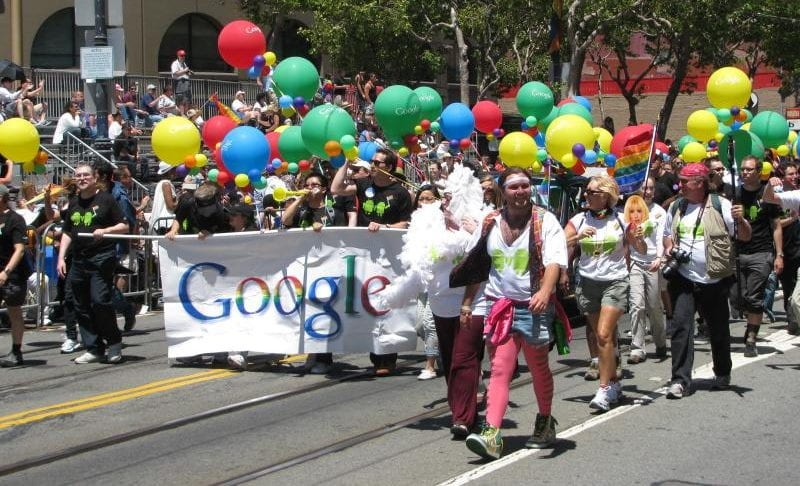
The response from those both inside and outside of Google was one of outrage and condemnation, although it should be noted that Damore did have supporters behind him and that these beliefs were not new development to the field. In the April 2017 Issue of The Atlantic, it was reported that within the tech industry most women have had to combat issues ranging from demeaning remarks to fending off repeated instances of inappropriate sexual advances. The article also referenced a number of studies reporting that women “are evaluated on their personality in a way that men are not. They are less likely to get funding from venture capitalists, who, studies also show, find pitches delivered by men—especially handsome men—more persuasive. And in a particularly cruel irony, women’s contributions to open-source software are accepted more often than men’s are, but only if their gender is unknown.”
This put Google in a difficult situation, for if they kept Damore as an employee others would see that as condoning his points and continuing the cycle of discrimination against women, but if they fired him as a gut reaction Google would be confirming his “echo chamber” criticism of the company. However, because of Google’s proactive steps to address this type of issue should it arise, a statement rejecting the manifesto was issued by their Vice President of Diversity, Integrity & Governance, Danielle Brown.
“We are unequivocal in our belief that diversity and inclusion are critical to our success as a company, and we’ll continue to stand for that and be committed to it for the long haul… Part of building an open, inclusive environment means fostering a culture in which those with alternative views, including different political views, feel safe sharing their opinions. But that discourse needs to work alongside the principles of equal employment found in our Code of Conduct, policies, and anti-discrimination laws.”
Through the embedding of diversity into their values, Google was able to swiftly respond by referencing their company policies and showing that those who disagree do so against the whole of the company’s standards and practices.
The Google incident is one of many demonstrating the importance of developing and including diversity statements and mandates within institutions and organizations. While used mainly to voice solidarity and commitment, the statements have the power to protect those who are underrepresented should a situation arise. The recent dismantling of these mandates and protections by the Department of the Interior and the Justice Department have left minority groups far more vulnerable to exclusion up through the highest levels of government; yet when viewing these decisions through the historical lens of diversity advocacy in the United States, the current blockages may only be temporary stumbling blocks on the road to further and deeper acceptance of inclusion across the nation.
